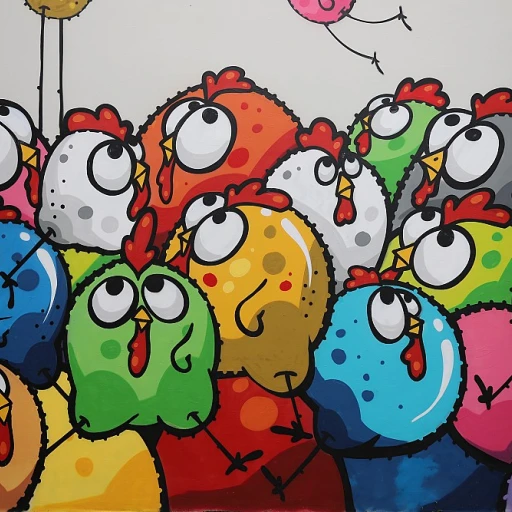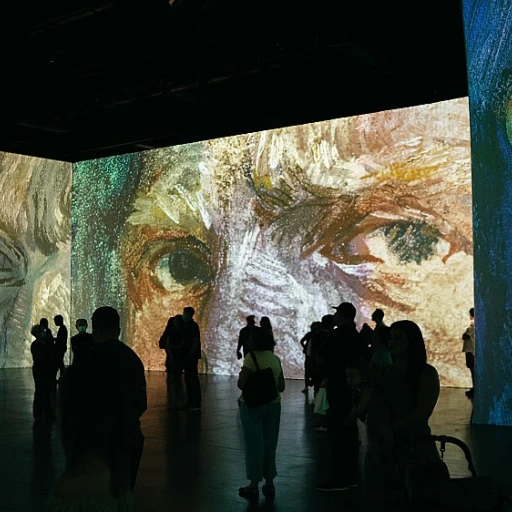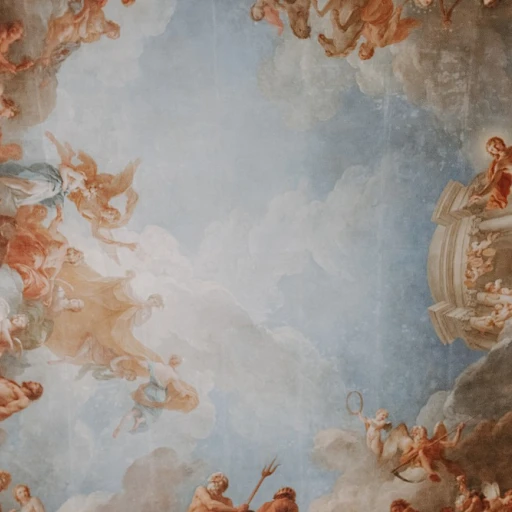-teaser.webp)
The Revival of Artistic Patronage in the Modern Era
The Renaissance of Art Sponsorship in Contemporary Times
The concept of artistic patronage, a time-honored tradition where affluent art enthusiasts support and nurture creative talent, has made a remarkable resurgence in today's art scene. According to a study by Art Basel and UBS, the global art market reached a staggering value of $50.1 billion in 2020, indicating a fertile ground for the revival of patronage. With the advent of technology and the proliferation of online platforms, modern patrons are redefining the way luxury artwork is supported and promoted.
Giving Back to the Art Community: A Win-Win Strategy
Many luxury art collectors see the importance of investing in the ecosystem that sustains their passion for high-end art. For instance, a survey by Larry's List reported that over 90% of collectors are actively involved in philanthropic activities related to art. By fostering emerging talent, collectors ensure the flow of innovation and creativity within the art world, adding new masterpieces to the canon of fine art and enhancing the value of their own collections in the process.
Cultivating the Next Generation: Spotlight on Up-and-Coming Artists
When luxury art collectors focus on emerging artists, they're not only influencing cultural discourse but also shaping the market. A report by ArtTactic highlighted that 63% of young collectors aim to discover new artists. By providing financial support, mentorship, and exposure to new audiences, patrons play an instrumental role in crafting the future of contemporary art. Examples include renowned collectors who create grants, offer residencies, or commission new works, thus propelling fresh voices into the limelight.
Strategic Philanthropy: Investing in Art's Future Stars
Embracing Strategic Philanthropy Within the Canvas of Art Investment
As art collection shifts toward a more strategic avenue, luxury art collectors are becoming pivotal in shaping the careers of emerging artists. Philanthropy in the art world is not just about altruism; it represents an astute investment in the burgeoning talent that could become tomorrow’s masters. According to a 2021 UBS report, high net worth individuals dedicate a significant portion of their philanthropic budget to the arts. This investment is twofold; patrons not only receive potential financial returns but also bring forth innovation and cultural dialogue into the art community.
Fostering Innovation Through Financial Support and Mentorship
- Providing grants and scholarships to promising artists
- Offering residencies that give creative spaces for artists to thrive
- Sponsoring exhibitions and galleries to showcase up-and-coming talent
In the luxury art market, the role of the collector has transcended beyond mere acquisition. Art Basel's annual report shows that seasoned collectors are now taking a hands-on approach in nurturing new talent. Financial backing is critical, but combining it with mentorship has proven to propel artists' careers forward. Luxury art collectors are not just buying paintings; they're investing in creative minds and fostering a network that can lead to exponential opportunities for these artists. "Supporting an artist early in their career can be transformative," notes a prominent collector, signaling the deep impact of patronage on the art ecosystem.
Constructing a Legacy Through Curated Collections
The 21st-century art patron is no longer content with amassing artworks; they're meticulously building a legacy that reflects a narrative of cultural wealth and societal contribution. A study from Wealth-X indicates that many collectors are motivated by the desire to cultivate a collection that tells a story, supporting artists whose work resonates with the collector’s personal values. This curated approach has seen a rise in luxury art collectors favoring artists who push boundaries, challenge norms, and offer fresh perspectives in the art world. "By investing in these voices, we shape the culture of tomorrow," a well-known patron shared, emphasizing the profound responsibility of being a guardian of cultural evolution.
Statistics reveal that the support of emerging artists not only elevates individual careers but also contributes to a richer, more vibrant art scene. For instance, a recent survey by Art Fund indicates that 60% of artists who received early patronage saw a significant increase in their exhibition invitations and sales within two to five years. As such, patronage is not merely an act of generosity but a strategic move that fosters emerging talent and cultivates a collection that bears the collector's unique signature and foresight.
Patronage as a Legacy: Building a Culturally Rich Collection
Creating an Enduring Cultural Legacy Through Art
The essence of luxury art collectors fostering emerging talent transcends the notion of mere acquisition. It is no secret that the most esteemed art patrons of history are remembered not only for the works they accumulated but also for the opportunities they provided to nascent artists. In the modern context, statistics suggest that the support given to up-and-coming artists substantially increases their chances of survival in the highly competitive art world. Yet, the legacy built by such patrons is incalculable, often influencing cultural landscapes for generations.
The Role of Exclusive Collectors in Shaping Art History
One cannot ignore the benchmark set by influential patrons such as Peggy Guggenheim, who left an indelible mark on the 20th-century art scene. Similar strategic patronage today involves not just purchasing art, but actively engaging with artists and the community, creating a synergy synonymous with cultural enrichment. As opined by esteemed curator Johann Zietsman, 'Patronage can be transformative, both for the artist and the collector, leading to a legacy that far outweighs the initial act of collecting.' The investment in emerging artists by exclusive collectors contributes significantly to defining future art movements and historical significance.
Benefitting the Collector's Estate and Beyond
However, the benefits of artistic patronage extend beyond the realms of culture and history. For the collector, there are substantial fiscal advantages to consider. According to the Art Basel and UBS Global Art Market Report, artworks are often viewed as valuable diversifiers in an investment portfolio. While the collector aids in the prosperity of emerging talents, they concurrently assemble a unique and culturally-rich collection that has the potential to appreciate in value. This appreciation is not merely financial but also reputational, solidifying their stance as venerated patrons within the art community.
- Supporting artists at pivotal moments in their careers
- Curating an exclusive and culturally significant art collection
- Possibility of substantial financial returns
- Elevating the collector's status within the art world
Fostering a Future Flourished with Creative Milestones
Predicting the art market's direction or an artist's career trajectory is as complex as it is exciting. Nonetheless, the integration of strategic philanthropy with a keen eye for creativity often paves the way for unprecedented artistic discoveries. By nurturing talent, a patron does more than creating an epoch; they foster a succession of creative milestones reflective of their profound impact. This, according to renowned art critic Helena Bassil-Morozow, is the 'truest form of cultural philanthropy, where the investment is in artistic potential rather than immediate accolades.'













